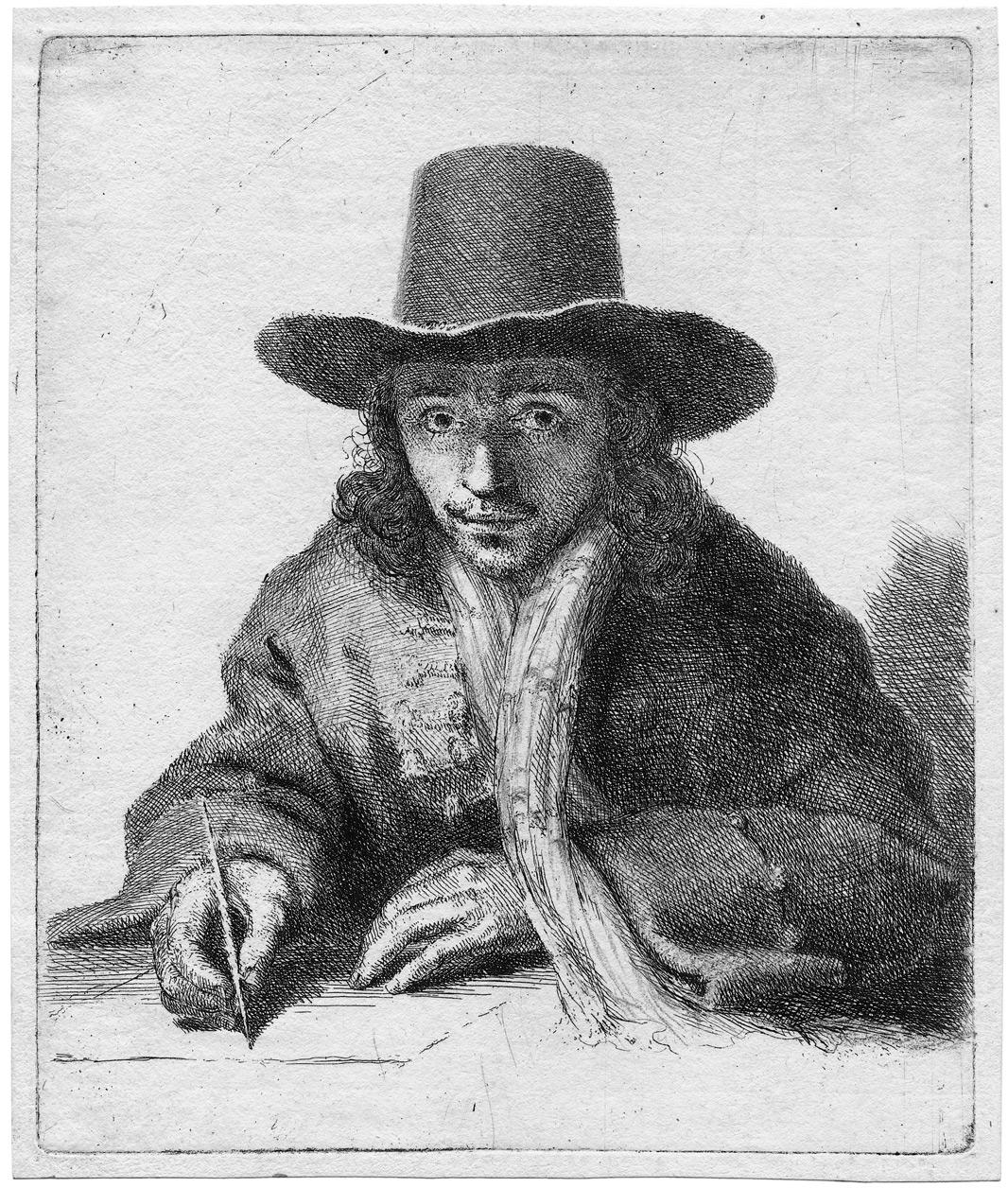Loading the page ...
Jan Lutma the Younger
(1624–1689, Amsterdam)
Self-Portrait, Drawing. Etching. 15.8 x 13.3 cm. Bartsch, école de Rembrandt 76; Rovinski 74, 76; Hollstein 3. Watermark: Coat of arms of Amsterdam (Ash-Fletcher 1).
This intimate self-portrait shows the son of the famous silversmith Jan Lutma the Elder (1584 Emden – 1669 Amsterdam), who was immortalized by none other than Rembrandt in a magnificent etched portrait dating from 1656. Born in Amsterdam in 1624, Lutma the Younger worked as an engraver and silversmith, becoming a master in 1643. In 1651 he was in Rome. No confirmed specimens of his work as a silversmith are known to exist, but he did produce a small printed oeuvre consisting of portraits and ornamental engravings. He is also considered to be the inventor of a tonal printing method known as opus mallei, a stippling technique derived from goldsmiths’ workshops, in which a burin and hammer (malleus in Latin) are used to achieve fine tonal transitions on the copperplate.
Jan Lutma has done a suggestive half-length portrait of himself en face, at the age of about twenty-five. This means that the etching was probably done in the early 1650s, shortly after Rembrandt’s famous Self-Portrait Drawing at a Window of 1648 (White & Boon 22), which doubtless served as a source of inspiration. Like Rembrandt, the young artist is looking up from his work; in front of him, on a sketchily indicated table, lies a white sheet of paper.
In his right hand he holds a pencil, while his left arm, crooked at the elbow, lies on the desk in a relaxed pose. The intensity of Lutma’s gaze suggests that he is looking at his reflection in a mirror. He is wearing a hat with a wide brim that overshadows his face almost completely and a loose overcoat embroidered with braid. A scarf flung nonchalantly around his neck adds an informal note.
The etching is executed in a technique that is astonishingly professional and differentiated for a beginner, showing how much Lutma owed to Rembrandt’s example. The fine, dense crosshatchings lend the portrayal depth and physical presence, vividly rendering the different textures of skin, hair and clothing. The play of light on the face and overcoat has been subtly caught. The bright daylight coming from straight ahead of him has picked out a fine silvery strip on the brim of his hat, while the broadness of the brim largely overshadows the youthful, alert-looking face. The piercing eyes, the tip of his nose and his left cheek gleam forth from the surrounding shadows.
A superb, nuanced and harmonious impression with narrow margins around the platemark. In impeccable condition. The etching is very rare. Hollstein documents a total of three impressions The present impression is the one recorded by Hollstein in the collection (Kupferstichkabinett) of the Princes of Waldburg-Wolfegg (Lugt 2542).
Contact us for further information